Stuff
I spent the day with my borrowed Nikon gear. For now, I am withholding my overall comments until I get to know the camera and lens better. If it were not for the help I received from IPT veteran and blog regular Krishna Prasad Kotti, I would not have been able to make a single good image on Saturday. He kindly and generously helped me set up the D5 during a long FaceTime session on Friday evening.
There are only two slots left on the Spoonbill Boat IPT. The Master Classes will be announced soon.
The Streak
Today makes one hundred seventy-four days in a row with a new educational blog post! This one took about two hours to prepare including the time spent optimizing the images. With all of my upcoming free time (or not …), the plan right now is to break the current record streak of 480 … Good health and good internet connections and my continuing insanity willing.


Booking.Com
Booking.Com came through for me twice again recently with both the DeSoto Fall IPT and next July’s UK Puffins, Gannets, and Bempton Pre-trip room reservations. And all the rates were great. If you’d like to give Booking.Com a shot, click here and you will earn a $25 reward. Thanks to the many who have already tried and used this great service.
|
|
|
This image was created on January 20 at La Jolla, CA with Canon gear by BAA friend Ivan Turpin. Yours truly with his Nikon gear
|
Say It Ain’t So!
It was nice running into Ivan Turpin at La Jolla. It was a cold morning with a strong west wind. A fair amount of clouds made photography possible. More than a few years ago Ivan kindly helped me with medical advice when my hand became infected after trigger finger surgery.
|
|
|
This image was created on January 20 at La Jolla, CA with the hand held Nikon AF-S NIKKOR 200-500mm f/5.6E ED VR lens (at 500mm) and the blazingly fast professional digital camera body, the Nikon D5 DSLR camera body with dual XQD slots). ISO 1600. Matrix metering probably -2/3 stop: 1/1000 sec. at f/5.6 in Manual mode. AWB at 8:19am in the shade on a cloudy morning. Group/Shutter Button AF. Click on the image to enjoy a larger version. Brown Pelican, Pacific race landing |
The Nikon D5 — the good
Working though the menus was easier than I had feared. Krishna was a great help. The AF system is quite excellent. The body seems lighter than the Canon 1DX II.
|
|
|
This image was created on January 20 at La Jolla, CA with the hand held Nikon AF-S NIKKOR 200-500mm f/5.6E ED VR lens (at 330mm) and the blazingly fast professional digital camera body, the Nikon D5 DSLR camera body with dual XQD slots). ISO 2000. Matrix metering probably +2/3 stop: 1/1000 sec. at f/5.6 in Manual mode. Cloudy WB at 8:30am on a mostly cloudy morning. Group/Shutter Button AF. Click on the image to enjoy a larger version. Brown Pelican, Pacific race, top shot |
The Nikon D5 — the bad
To switch from Group AF to d9 AF you need to press a tiny button on the front left bottom of the camera and then turn the index finger dial. It is manageable when you are working horizontally but is ergonomically almost impossible when hand holding a relatively heavy telephoto lens … The engineers might coulda shoulda thought of something simpler 🙂
|
|
|
This image was created on January 20 at La Jolla, CA with the hand held Nikon AF-S NIKKOR 200-500mm f/5.6E ED VR lens (at 500mm) and the blazingly fast professional digital camera body, the Nikon D5 DSLR camera body with dual XQD slots). ISO 2000. Matrix metering probably +2/3 stop: 1/1000 sec. at f/5.6 in Manual mode. Cloudy WB at 8:30am on a mostly cloudy morning. Group/Shutter Button AF. Click on the image to enjoy a larger version. Brown Pelican, Pacific race, top shot |
The 200-500 Lens — the good
The extra 100mm of reach is a godsend (as compared to the Canon 100-400mm II) and the constant f/5.6 aperture is another plus.
|
|
|
This image was created on January 20 at La Jolla, CA with the hand held Nikon AF-S NIKKOR 200-500mm f/5.6E ED VR lens (at 500mm) and the blazingly fast professional digital camera body, the Nikon D5 DSLR camera body with dual XQD slots). ISO 1250. Matrix metering probably +2 stops: 1/1000 sec. at f/5.6 in Manual mode. Cloudy WB at 8:36am on a mostly cloudy morning. Group/Shutter Button AF. Click on the image to enjoy a larger version. Brown Pelican, Pacific race, landing gear down |
The 200-500 Lens — the bad
The lens zooms backwards as compared to the Canon 100-400mm; that will take some getting used to. And the zoom is stiffer. The lens is relatively heavy and a bit on the clunky side.
|
|
|
This image was created on January 20 at La Jolla, CA with the hand held Nikon AF-S NIKKOR 200-500mm f/5.6E ED VR lens (at 500mm) and the blazingly fast professional digital camera body, the Nikon D5 DSLR camera body with dual XQD slots). ISO 800. Matrix metering probably -1 1/3 stops: 1/3200 sec. at f/5.6 in Manual mode. Cloudy WB at 8:57am on with the sun peeking out. Group/Shutter Button AF. Click on the image to enjoy a larger version. Brown Pelican, Pacific race, incoming backlit |
Exposure Question
Why did this image need so much negative EC?
|
|
|
This image was created on January 20 at La Jolla, CA with the hand held Nikon AF-S NIKKOR 200-500mm f/5.6E ED VR lens (at 500mm) and the blazingly fast professional digital camera body, the Nikon D5 DSLR camera body with dual XQD slots). ISO 800. Matrix metering probably +2 stops: 1/5000 sec. at f/5.6 in Manual mode. Cloudy WB at 9:57am with the sun out. Group/Shutter Button AF. Click on the image to enjoy a larger version. Brandt’s Cormorant with nesting material/strong> |
Getting the Right Exposure With a New System
Getting the right exposure with a new system was a snap. Make a test image. Check the histogram. Adjust as needed. Just like always. Experience and a working knowledge of exposure theory helps with your initial settings. The brand of camera does not make one bit of difference.
|
|
|
This image was created on January 20 at La Jolla, CA with the hand held Nikon AF-S NIKKOR 200-500mm f/5.6E ED VR lens (at 500mm) and the blazingly fast professional digital camera body, the Nikon D5 DSLR camera body with dual XQD slots). ISO 400. Matrix metering probably -1/3 stop: 1/2500 sec. at f/5.6 in Manual mode. Cloudy WB at 4:09pm on a sunny afternoon. Group/Shutter Button AF. Click on the image to enjoy a larger version. Western Gull, late afternoon light/strong> |
How Did I Do?
Considering that I was using brand new gear for the first time, how do you think that I did?
Which of the seven images is your favorite? Why?
Help Support the Blog
Please help support my (stupendous) efforts here on the blog by remembering to click on the logo link above each time that you shop Amazon. That would be greatly appreciated. There is no problem using your Prime account; just click on the link and log into your Prime account. With love, artie
If In Doubt …
If in doubt about using the BAA B&H affiliate link correctly, you can always start your search by clicking here. Please note that the tracking is invisible. Web orders only. Please, however, remember to shoot me your receipt via e-mail.




Please Remember to use my Affiliate Links and to Visit the New BAA Online Store 🙂
To show your appreciation for my continuing efforts here, we ask, as always, that you get in the habit of using my B&H affiliate links on the right side of the blog for all of your photo and electronics purchases. Please check the availability of all photographic accessories in the New BIRDS AS ART Online Store, especially the Mongoose M3.6 tripod head, Wimberley lens plates, Delkin flash cards and accessories, and LensCoat stuff.
As always, we sell only what I have used, have tested, and can depend on. We will not sell you junk. We know what you need to make creating great images easy and fun. And please remember that I am always glad to answer your gear questions via e-mail.
I would of course appreciate your using our B&H affiliate links for all of your major gear, video, and electronic purchases. For the photographic stuff mentioned in the paragraph above, and for everything else in the new store, we, meaning BAA, would of course greatly appreciate your business. Here is a huge thank you to the many who have been using our links on a regular basis and those who will be visiting the New BIRDS AS ART Online Store as well.
Be sure to like and follow BAA on Facebook by clicking on the logo link upper right. Tanks a stack.
Typos
In all blog posts and Bulletins, feel free to e-mail or to leave a comment regarding any typos or errors. Just be right :).

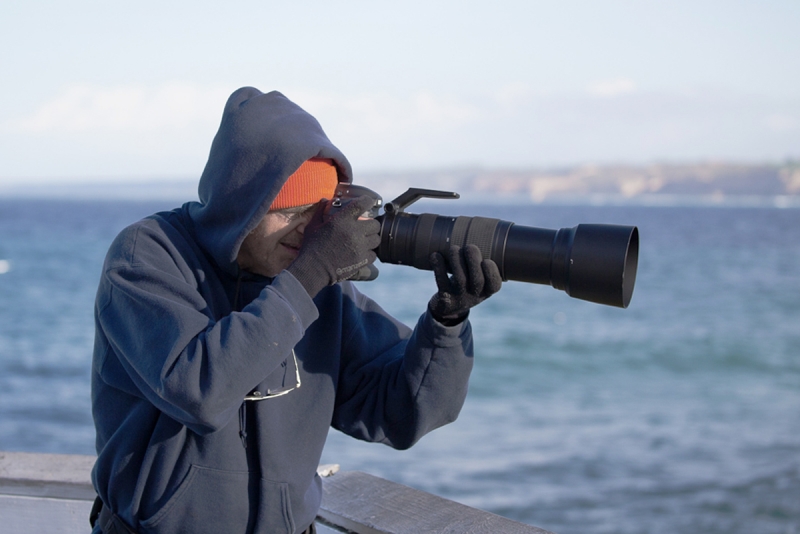
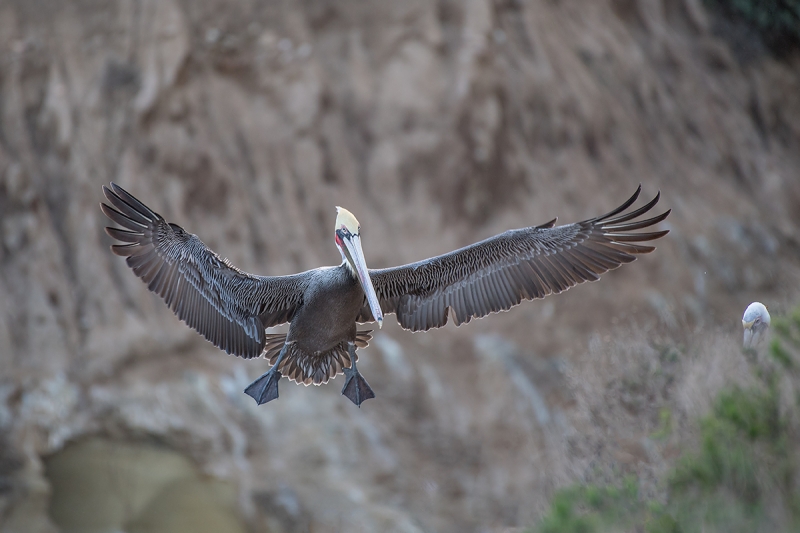
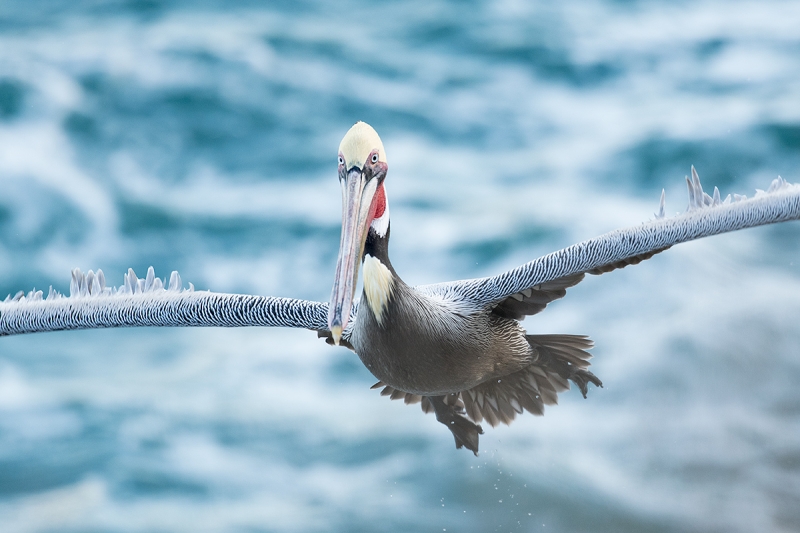
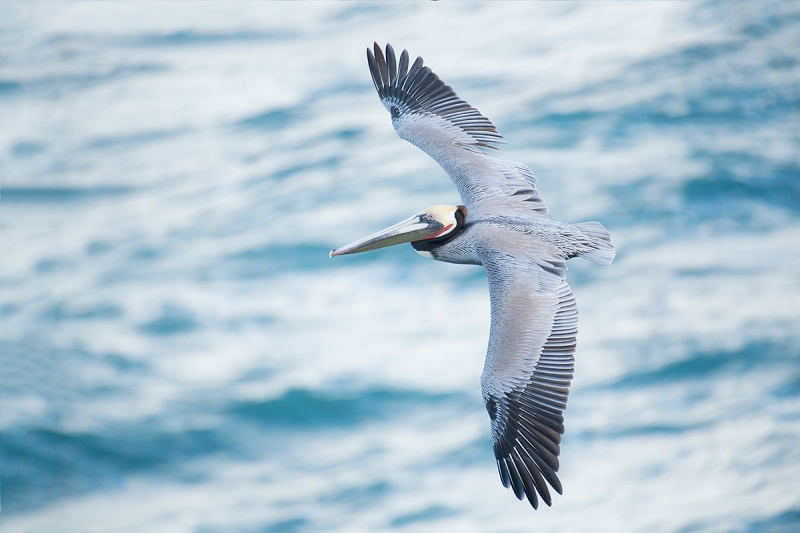
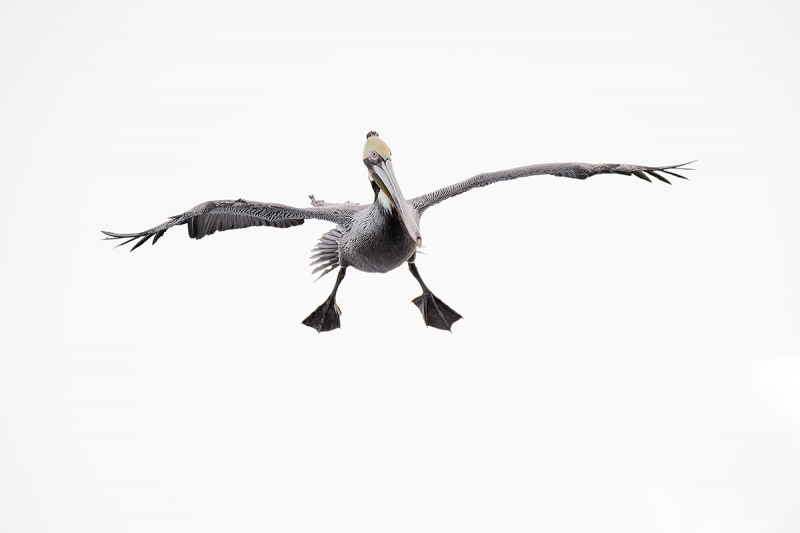
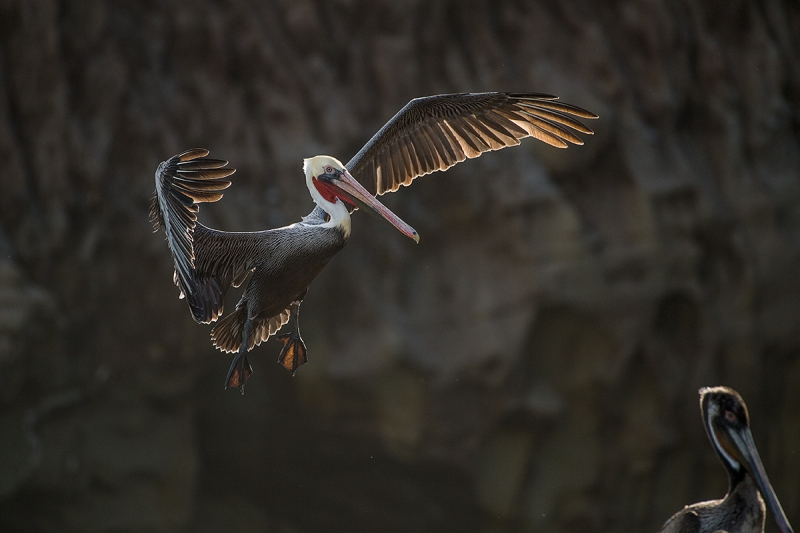
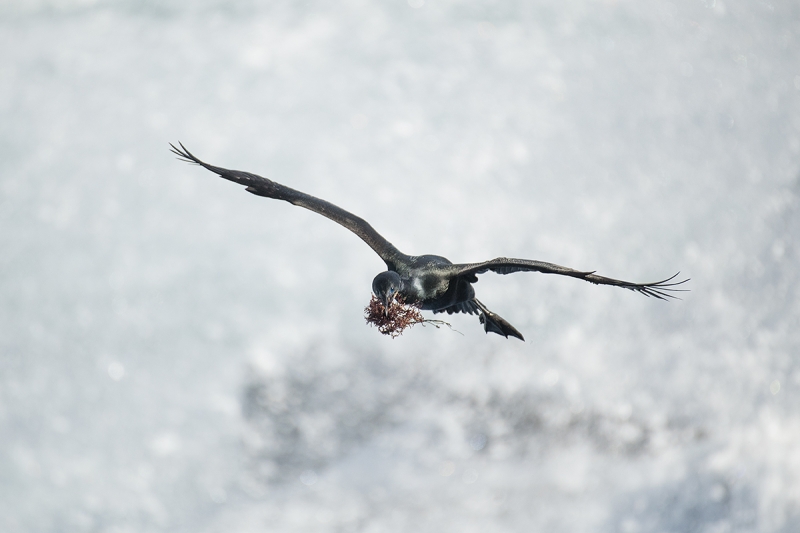
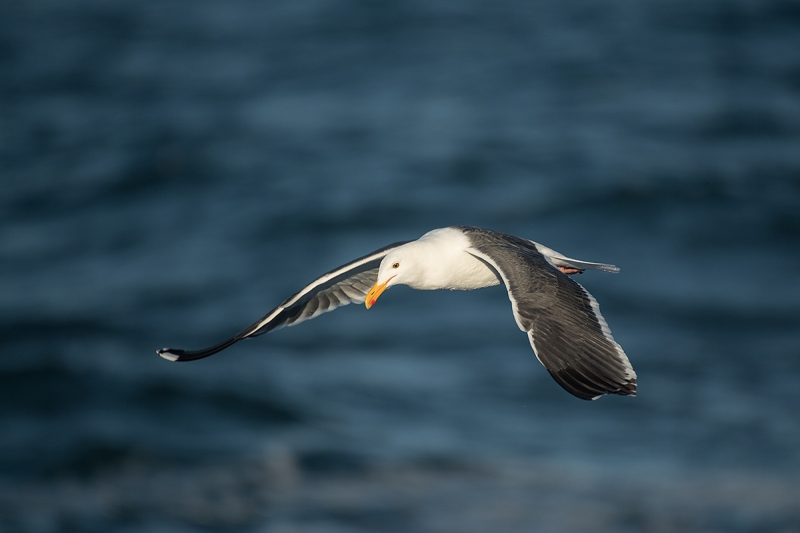













Just a question, I’ve looked through as many of your comments as possible, but have missed it.
Are you using Back Button Focus or focus with the Shutter button? Think the Pelican in Backlight indicates Shutter button focus?
For BIF and old arthritic hands, I’m now using Shutter. Less things to get in the way.
Interested.
Hi David, I went back to shutter button AF many years ago for 99% of my images. You should visit the blog more often 🙂
with love, artie
Really awesome images. I have a Nikon D7100 and can’t wait to get myself a pro-body.
Welcome to Nikon, Artie. 200-500 is sure a very good lens and it’ll take a week of habit to get used to the weight of the lens. Have you tried it the lens in Normal and Sport both? If so, would like to know what difference it makes. Thanks 🙂
Guru, this is what I tried to discuss with you before. All my Nikonian friends are happily shooting with their D500 + Nikkor 200-500mm combo leaving us (Canonians) in despair and wondering when the Canon EF 200-600mm will be announced!
Regards.
You did very well with the Nikon gear. The back lit pelican is my favorite. I know your frustrstion having switched from Nikon to Canon. I returned to Nikon after 3 yrs because I never was comfortable. It was like going home when I returned to Nikon. I learned both systems are amazing and its the photographer and proper teccnique. We all should spend more on education and let the gear become second.
Hi Artie,
Without question, the backlit pelican. Amazing!
Ed
Backlit Pelican one of your best shots ever—could be cover of a third edition of BAA.
But NIKON ? “The Work” program you are in must have had profound effect on your thought processes—
Thanks Max. I love that you think that. Stay tuned …
with love, artie
“Brown Pelican, Pacific race, incoming backlit” is my favorite because of the backlighting and the 2nd pelican in the right corner. Both things make the image unique. Negative EC was needed to keep detail in the backlit areas.
I remember your mentioning this before and I think it is even more pronounced in these images–the cyan color of the water behind the flying pelicans. I imagine in post processing the cyan could be diminished? The color seems unrealistic.
Seems to me like these are excellent images for a new or familiar camera.
Thanks. You could be right about the CYAN …
with love, artie
Hi, Artie. My favorite is the first shot, of you taking a photograph. My next favorite is the brown pelican, Pacific race, top shot. I love the sharpness of the wing and I love seeing the feathers at the rear of the wing standing up. Those feathers show turbulent airflow back there as the pelican comes in to land and the wing starts to stall. But even without that I love the image.
Friends of mine in Albuquerque sold all their Canon gear a few months ago and went with Nikon because they say they get more keepers with the Nikon D5, D500, and D850 than with the Canon 1DXII, 5DIV, and 7DII. My own Canon 7DII and 100-400 f/4.5-5.6L IS II combination still is better than I am. And the image quality of my 5-year-old Canon 6D still blows me away.
I’m a long time Canon user but have added the Nikon D500 and 200-500 for the past year to my kit. I agree that the AF switching button is in the worst possible place for any lens bigger than a 70-200. You can setup other buttons to do back button focus and when pushed use a different focus mode. You can push in the joystick and have a different AF mode or the any of the 3 buttons on the front of the camera beside the grip. To do this go to f1 custom control assignment in the Custom Settings Menu. Select “A-F area mode + AF ON” as the function for the button you choose and it will let you select which AF mode you want when that button is pressed and AF at the same time.
I would highly recommend Steve Perry’s AF guide and his videos on Youtube to get even more familiar with the Nikon system.
After a year of using Nikon alongside my 1DX2 and 5D4, I will say the Nikon AF system is equal to the 1DX2 in just about all aspects and is better for shooting very rapid birds IF (like small raptors, songbirds and jays). Give 3D and Auto AF modes a try for fast birds and you will be surprised….I would never use Canon’s equivalent All-Point mode but the Nikon Auto AF mode is almost uncanny how it picks up the fast moving bird (no foreground distractions can be present) from messy backgrounds.
For most shooting Group AF and Single point are my go to modes. On the D5 (D850) you also have D9 (not on D500) which would be a good alternative to Single point.
Its taken me a while to be able to zoom the lens the right way and to be able to mount lenses the right way!!
Hi Geoff, Thanks. I do take issue with only one thing that you said above. And when I share that here, it may set off some fireworks …
with love, artie
I always enjoy a good fireworks show….LOL
I’ll be interested to read your findings.
My 400DOII is the one thing keeping me still shooting Canon and the cost/trouble of selling my large Canon collection (especially in Canada).
I loved the series. Especially the backlit shot. Unique and dramatic!
Hi Artie, all the images are superb. As they say it ain’t the camera but the photographer who makes the Images.
I like the backlit image “Brown Pelican, Pacific race, incoming backlit”. I do like the rim lighting a lot specially if it is much more darker – more low key with rim lighting.
The back lit shot needs negative EC to preserve highlights.
Good nornng Artie,
I shoot with the D500 which shares many similarities with it’s big brother the D5. With respect to shooting BIF’s and switching between Auto Focus points, you can program the function buttons on the front of the camera to quickly change between d9 and Group, or any of the Auto Focus Points, on the fly without having to take your hands away from the rig.
To set this up-go to the Menu and select the Custom Shooting Menu and navigate down to the Controls menu by scrolling down with the Multi-selection button. Once selected, the f Control menu will offer a variety of options, look for the Custom Control assignment sub-menu, on the D500 it’s labeled f1- not sure if it’s the same on the D5- but it will be offered in the menu. Once you select Custom Control assignment another sub-menu will appear. This menu has two columns, the selectable items on the left allow one button activation, the column on the right requires a push of a button and a twist of the Main Command wheel-the wheel below the shutter-camera back. You can then choose to use the Pv button or the Fn1 button on the front of the camera to easily switch focus point modes with one finger.
I set this up specifically for birds in flight shots and it works beautifully. I use back button focus with d25 as my primary selection, and when a flight opportunity occurs I just press the Pv button to go to Group Focus mode. One can also select the Group Focus points with auto focus as an option in that sub-menu, allowing you to track and focus simultaneously without having to use the assigned (usually AF-On) button for focus activation. I also have the MB-17 grip, which has a small button to the left of the shutter which can be programmed to mimic the functions I highlighted above. If I’m not mistaken the D5 has a similar button which works identically when shooting vertically.
Hope this helps,
Best,
Chuck Gangas
Thanks Chuck. I know of the fixes, but they are all clunky. The Nikon engineers could have done a whole let better without really trying …
with love, arite
ps: for example, on the D5 you need to press and hold the Pv button to maintain the switch. At the very least you should be able to toggle between the two …
Hi Artie, you repeated this phrase twice at the top of the blog: There are only two slots left on the Spoonbill Boat IPT. The Master Classes will be announced soon.
Artie,
I read and enjoy your email every day. As another way to change AF options, I have programed the PV button on the front of the Nikon body as a “front-button” focus option allowing for quick changes in auto-focus mode. I like having single point on back button and group on front button when shooting stationary birds that may “take-off”. After a while, choosing between back and front button focus has become second nature. Hope this is useful….
Ken
Thanks Ken,
Got that but see my reply to Chuck above. I would love to learn that I am wrong …
with love, artie
Hi Artie, great job with a new camera system! It is not easy to react quickly with equipment you don’t know.
Regarding the exposure question, most of the frame is very dark. The camera will meter it, assume that the scene is underexposed and bring it t a much lighter (18% gray) average. That would result in a dull, boring image, where the blacks are gray.
As is, this backlit image is my favorite from the series.
So you seem to be ready to convert to the dark side :). It will be very interesting to read about your experience with the new system. 200-500 is a very good lens to hand hold though I really like a heavier Sigma 150-600 Sport that I purchased before the Nikon was released.
Hi Artie, never having changed systems I can’t be sure, but I think you did very well. My favourite image is the brown pelican flying in with it’s landing gear down. I like the simplicity of the dark bird against the white sky. I think that I a crop would improve it significantly. The backlight pelican shot needed a lot of negative EC because you wanted to have contrast between the dark cliffs and the rim lit pelican, without the camera blowing out the edges and bringing up the dark cliffs. Enjoy,
Jake
Thanks Jake. Landing gear down is already a decent crop …
with love, artie